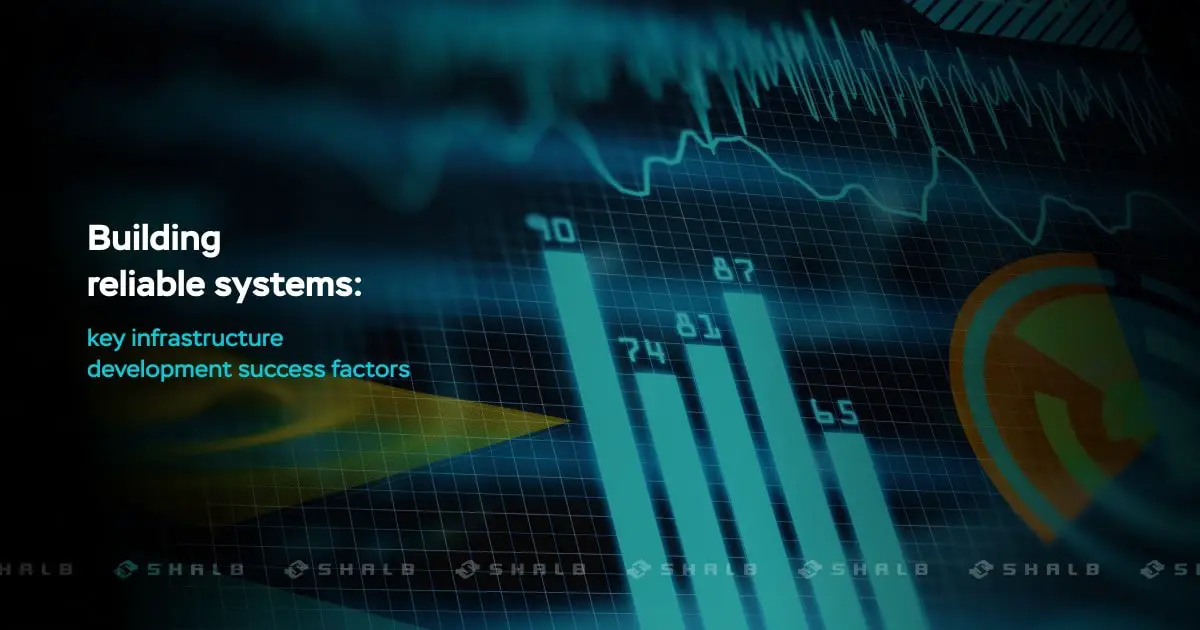
Note: This is a guest post written by Anna Melnikova
Let’s look at the issues from setup to optimization and emphasize observability’s role in system stability and health. Infrastructure, application, and deployment problems cause most of these concerns.
Infrastructure
Whatever type of architecture it should provide reliable and consistent performance.
System architecture should follow fault-tolerance and reliability guidelines. All vital components can replace active ones if they fail. Scalable systems can add and remove resources as demand changes. With an IT infrastructure audit to test issues and ensure they function in the event of a failure.
Stack modernity
First, you can use market-leading features to improve your technical skills. Second, an up-to-date stack simplifies automation, speeding development, reducing defects, and improving deployments and process organization, adding value.
Process automation
Automation saves time and frees up human resources for creative work. It accelerates development, improves code quality, simplifies infrastructure administration, and promotes business operations. Infrastructure automation focuses on:
- DevOps Infrastructure as Code (IaC)
- DevOps CI/CD
- Autoscaling
- Auto-monitoring
Security
Security strategies protect data, systems, and assets from threats. Identity and access management, infrastructure protection, detective controls, and data protection should guide system design. Secure all infrastructure layers with defense-in-depth.
Application
If the code isn’t good, it could cause incidents, rollbacks, and production problems. Change failure rate is one of the DORA metrics that shows how safe your code is against failures. As a DevOps development company we apply it with DevOps. The less errors a code has, the lower its average, on average. There are many ways to cut down on this, such as using test-driven development and feature flags.
Use the 12 Factor App principles to make sure your application is ready for the cloud. Cloud-native apps are made from the start to take advantage of the benefits of cloud services. Cloud architecture design includes microservices architecture, the ability to move as much as possible between runtimes, and scaling. Even though the principles were made a decade before containers and Kubernetes became popular, they still work today.
With the Open Web Application Security Project’s (OWASP) list of security standards, called “security by design principles,” for security hardening developers can make apps with high levels of security. Many cyberattacks happen by taking advantage of software flaws, which are mistakes or oversights in programming.
Code and deployments
CI/CD builds, tests, and deploys code immediately. It filters bad code. A botched deployment or version can be mitigated by automated rollbacks. Select an application-optimal deployment strategy for performance optimization.
Observability
This sophisticated utility provides real-time system status. It shows health and performance indicators, traces, and logs in context.
Metrics
Infrastructure and app analytics are important. Both are needed to understand our systems. RAM and CPU consumption are infrastructural and app metrics.
Tracing
It lets developers find slow calls, operations that take a long time, services that don’t work, and where they happen. Tracing is an important part of microservices architecture because it puts all of this information in one place.
Logs
Log monitoring keep track of both rare and important events, such as access logs for a web service or different error conditions. By looking at logs, tech teams can find problems and take steps to stop them from happening again.
Conclusion
We have gone over the main reasons why your infrastructure, application, or deployment could fail and given some general tips on how to tune them for better performance.
We have gone over the main reasons why your infrastructure, application, or deployment could fail and given some general tips on how to tune them for better performance.
SHALB is a devops company that helps software teams all over the world with DevOps, SRE, Kubernetes and Kubernetes cluster managers, and System Architect Services 24 hours a day, 7 days a week. Using the Infrastructure as Code method, Kubernetes, Serverless, and Terraform technologies, we build and maintain cloud-native systems that can work even if something goes wrong.






